Read more of this story at Slashdot.
Read more of this story at Slashdot.
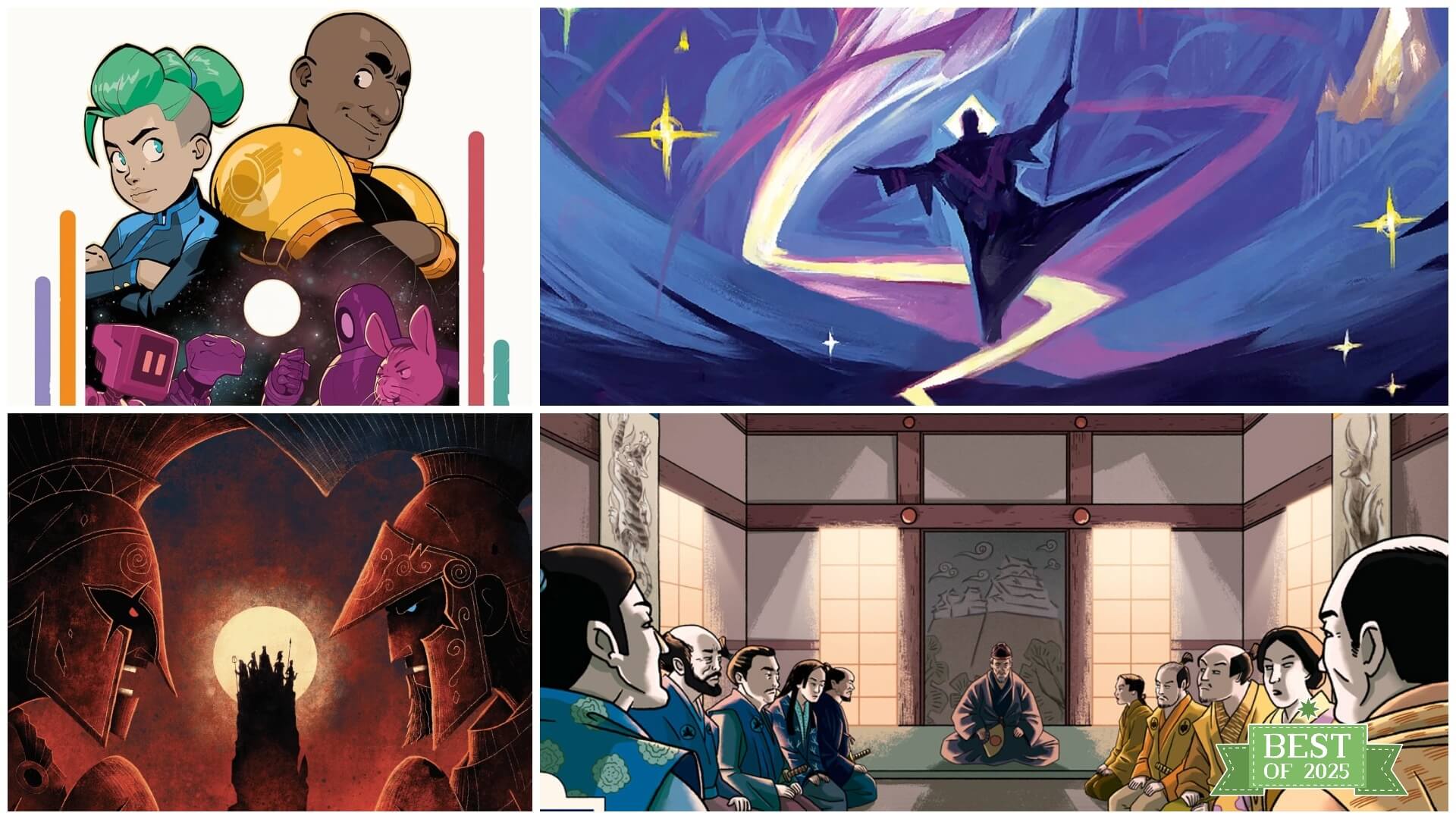
2025 is going to go down as a good year for new board games, although politics have made it unclear what is and is not a 2025 game. Tariff hijinks have exacerbated the kinds of supply issues that board game publishers have faced since the pandemic, so many games’ release dates ended up delayed, or the publishers printed fewer copies, in some cases only delivering enough to fulfill crowdfunding orders without sending to retail at all because tariffs hiked their costs. That means that there were a lot of potentially great games out there that I just didn’t get to play, including the most promising game I saw at Gen Con (12 Rivers) and one of the most acclaimed games of the year (The Fate Of The Fellowship, a Pandemic game set in the Lord Of The Rings universe), or that didn’t make it to the market in time for this list (Baghdad, Ada’s Dream). I have zero complaints with the publishers I work with, who were as always quite generous with review copies; it’s just the environment in which they have to work, and they should always sell whatever they can rather than sending a copy to me.
So with those caveats out of the way, here are my top 10 new board games of 2025. These are all original titles, not reprints or just new skins on old games, and all came out in the U.S. roughly between December 1, 2024, and November 30, 2025 … although I’ve got one on here that might have come out just before that window. Let’s err on the side of including another awesome game instead of being a stickler.
Duel For Cardia

(Image: Asmodee)
It was a great year for two-player games, based on my own tastes, at least, with five purely two-player games on this top 10, along with the wonderful reprint of Yokohama Duel, The Lord Of The Rings: Duel For Middle-earth (based on 7 Wonders Duel), Ichor (an update of 1993’s Tiku), Leaders, Gatsby, and more. Duel for Cardia is a capture-the-flag game with a new twist: You each play one card simultaneously to the current spot on the board, with the player who plays the higher-valued card getting one signet ring; the player who loses that specific head-to-head battle then gets to activate the power on their card, which can affect that battle, a past one, a future one, or even end the round immediately. The goal is to win five signet rings in a round, and then to win two rounds of three. The game comes with two separate decks, each of which has two identical sets of cards numbered one to 16, so you can play them as is or mix and match as long as you each play with the same deck. There’s a lot of game here for a tiny box and those small decks. Don’t let the silly name deter you.
Finspan
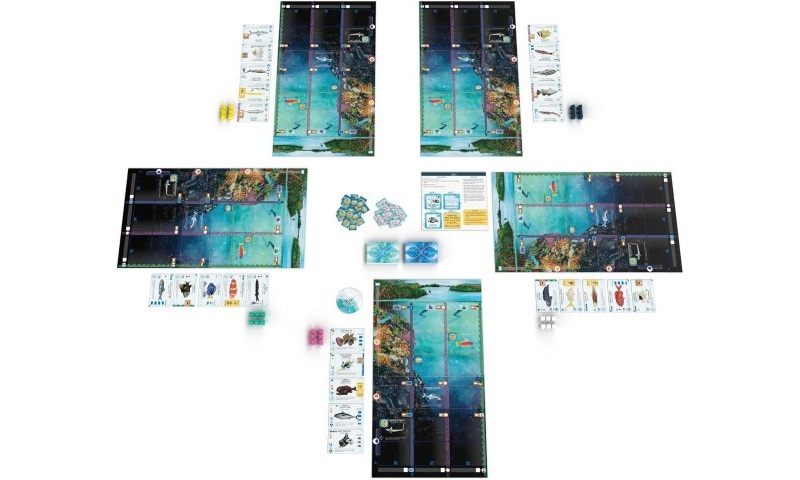
(Image: Stonemaier Games)
Finspan is the second spin-off of Wingspan, after Wyrmspan, which used dragons and took Wingspan to a higher complexity level. Finspan takes us under the sea, and makes the game simpler and more accessible, making it better for those friends who want to try “the bird game” but maybe haven’t played a lot of games of this style and thus could find it tough sledding (flying?). In Finspan, the boards are vertical, and are divided into three oceans, each of which has three zones representing various depths where different fish species can live. As in Wingspan, you play species cards from your hand by paying resources, but resources here are easier to come by, and you can’t end up with multiple turns in a row where you’re unable to play anything. The engine-building aspect is still here, as you can send a diver to one ocean and activate all of your cards there, so it provides some of the same pleasure of the original as you see your plans start to come together. It’s just a streamlined, less constrained Wingspan; I happen to prefer both the original and Wyrmspan, but I see the value of a simpler game for people who find Wingspan too intimidating at first blush.
Flatiron
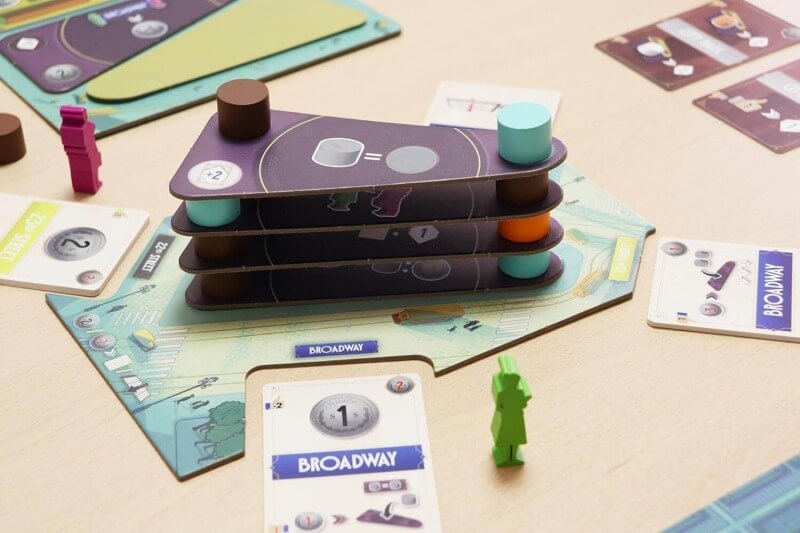
(Image: Ludonova)
This game came out some time around or just after my year-end 2024 list ran, so I didn’t include it on that top 10, but I’m acknowledging that it might technically be a 2024 release. Regardless of when it came out, it’s another banger from Shei and Isra, who landed two games on this list. Players compete to build the famed Flatiron building in New York City, placing workers around the streets that abut the structure and then building pillars and eventually five floors, each of which changes the board slightly. The cards you gain as you play workers then make your personal board stronger, which in turn boosts the power of the actions you take on the mean streets of New York. This game also looks amazing on the table—when I first saw it at PAX Unplugged 2024, it grabbed my eye before I even realized who’d designed it. Everything this couple produces seems to be right on my wavelength—they’re midweight games that provide all of the intellectual challenge of heavier, longer titles.
Iliad
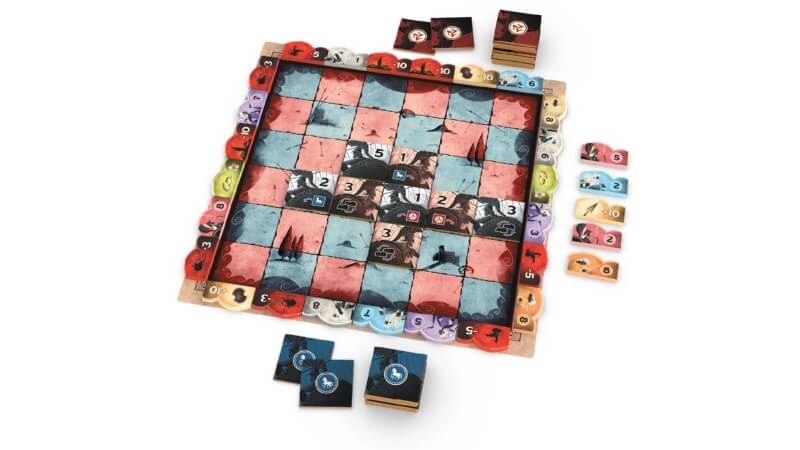
(Image: Bitewing)
The great designer Reiner Knizia had a slew of new and rethemed games come out in 2025, with Iliad the best of the group and the one that feels the most like his best games, notably Samurai (itself coming back out with a new theme in 2026 as Hanami). Iliad is a two-player game played on a 6×6 board where each player has the same set of 18 tiles, three each in values one through five, as well as three more tiles that draw value based on where they’re played; they play them to the board, one at a time, to try to secure majorities in rows and columns. The player with the higher-valued tiles in a completed row/column chooses one of the two point tokens adjacent to its ends, and the other player gets the remaining one. Tiles numbered one through four also have actions on them that can include moving one of your own or your opponent’s tiles and even flipping two tiles, one of yours and one of your opponent’s, face down so they don’t score. The game ends once each player has played all of their tiles; if one player has point tokens for all five gods, they win, but if both or neither does, then it’s based on the point tokens you have. The game draws a lot from Samurai, my favorite Knizia game ever, but the area-control aspect is entirely different, and the scoring is quite different as well, but it scratches a very similar itch, and there’s just a dash of luck here in what is otherwise a great game of strategy.
Luthier
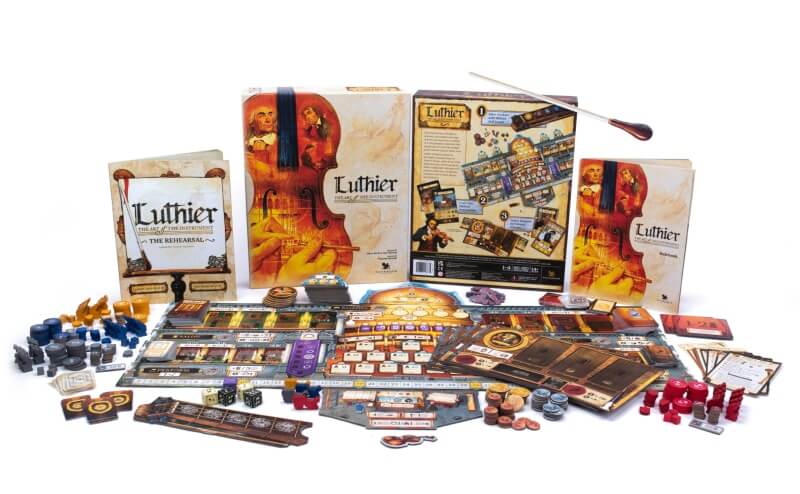
(Image: Paverson Games)
Luthier is the second game from Dave Beck, designer of Distilled, and like the former game it is an immaculate and stunning presence on the table, with game play that runs two-plus hours but isn’t actually that complex turn to turn. Players play as instrument makers during three periods of classical music’s height in Europe, placing workers with different strengths that also function as bidding tokens, gaining resources and orders for instruments while also courting patrons and commissioning performances for cash and points. As the game progresses, you’ll also gain two new workers (like in Everdell), and you can always hire “apprentices” to make your bids stronger throughout the game—although they go back to the supply after you’ve used them once. There are several ways to win, and if you’ve got the time, it’s especially fun for a game of this length, because every path you might take makes you feel like you really did something, even if you don’t actually win. And it has its own soundtrack.
Sanctuary
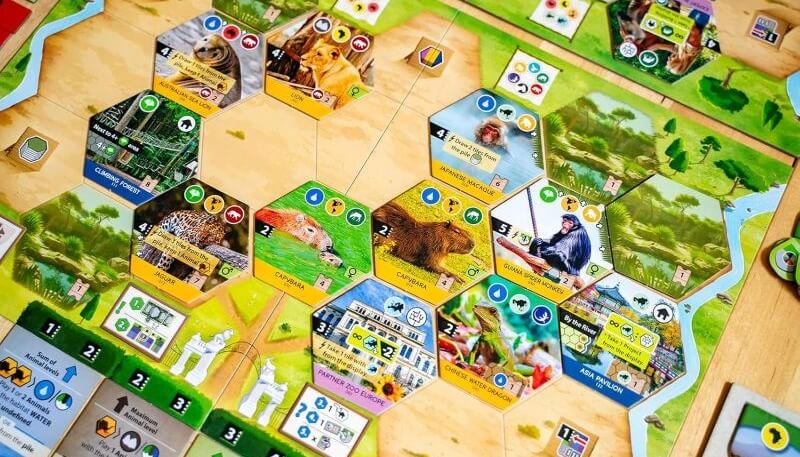
(Image: Feuerland Spiele)
Sanctuary is simpler Ark Nova, the way that Terra Nova is simpler Terra Mystica and Finspan (later on this list) is simpler Wingspan. Those things can get people pretty worked up; if you read much of the online commentary on Sanctuary, there are many players who love this game, and quite a few Ark Nova fans who hate it because it takes away the parts of Ark Nova they like the most. I do prefer Ark Nova to this, but Ark Nova is your entire evening, with a long setup and a pretty lengthy play time, while Sanctuary gets some of the good stuff from the original game into a quicker tile-laying experience that keeps a similar action-selection mechanic while trimming some of Ark Nova’s fat, too. I don’t think this is a game you’ll want if you love Ark Nova; it’s for an entirely different audience, and that’s perfectly fine.
Trinket Trove

(Images: GameHead)
This one’s a real sleeper, as it looks like a cute game of woodland creatures but turns out to be a somewhat mathy game of set collection (that’s all a good thing, by the way), where you have to choose your bid cards in each round from the cards you’re collecting. Each “trinket” type in the deck scores a little differently, most of them getting more valuable as you collect more, with the card’s bid value of two through eight showing how many make a complete set. It’s a better game with more players, going up to six, as you get more cards out on the market each turn and will see much more of the deck, while this also increases the odds that two players will be competing for the same trinket types. Turns are also extremely short, so even at that player count you can get a whole game in under 30-35 minutes.
The White Castle Duel
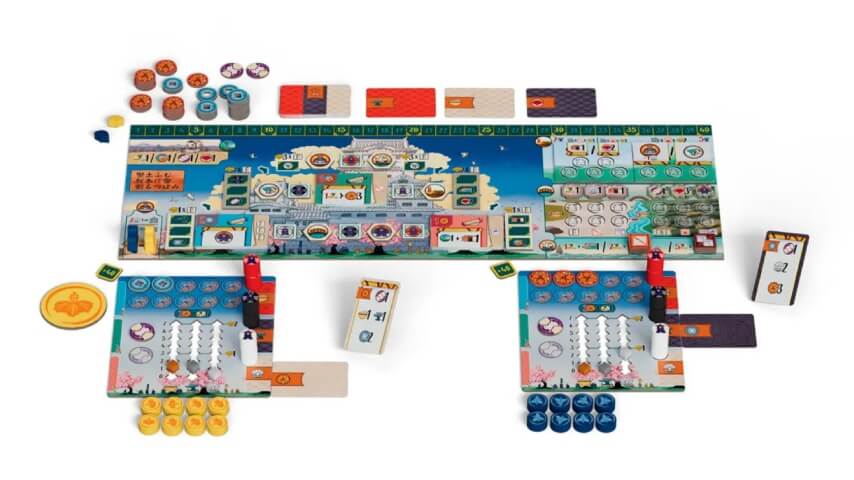
(Image: Devir)
The White Castle was my #1 game of 2023 and remains a favorite of mine, as it provides such a rich, complex gaming experience in the promised 80 minutes, with each player getting only nine turns over the course of the game. This two-player spin-off is an entirely new game played on a similar board, without the original’s dice or worker placement mechanism. Here each player starts with six tokens that they place on the castle board in the first half of the game, gaining lantern bonuses (which players of the original will recognize) and then taking two actions from the adjacent spaces. In the second half, the players will each take six tokens from the castle and place them on their personal boards—but they can take any tokens, regardless of who placed them in the first part of the game. So you get 12 turns in total, once again gaining resources and competing for favor. The scoring here is more ornate than in the original, as there are multiple products (as in, x times y) you’ll need to monitor as you go, and that’s the only part of the game I didn’t love. I happen to think The White Castle is good with two, but better with three or four, so there is a place for this two-player game on my shelves too.
Wine Cellar

(Image: 25th Century Games)
This small-box game was one of the bigger surprises of the year for me, as it allows for up to eight players while barely expanding the play time, which maxes out around 20-25 minutes. Each player starts out with a client card showing the types of wines they prefer by style and country of origin, and a hand of wine cards that they’ll use to bid on the wines placed on the table in each round—one per player, so you will get something, but maybe not the wine your client wanted. There’s some luck involved here, as you can easily get a starting hand of low-numbered cards, but there’s a lot of strategy involved in bidding and you can often infer what other players want and bid accordingly. There are just so few games that play well with this number that aren’t party games.
Zenith
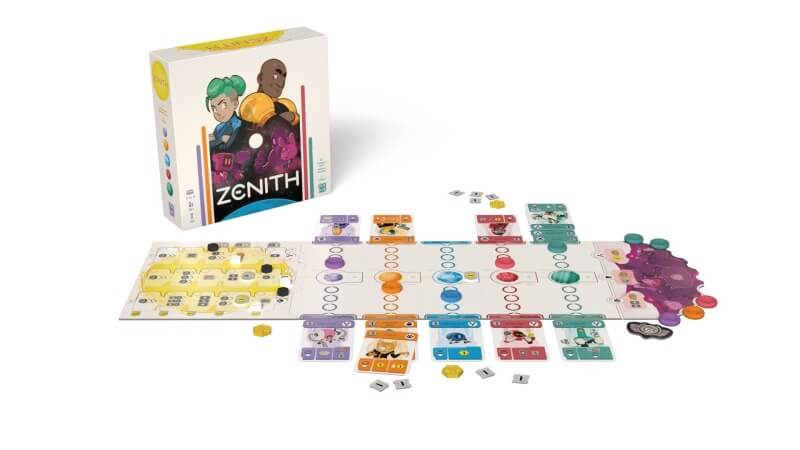
(Image: PlayPunk)
This fantastic two-player capture-the-flag game was my #1 game all year, from when I first demoed it at PAX Unplugged in 2024 through playing it on Board Game Arena and its physical release in May. It has everything I want and expect in a two-player game: It’s extremely interactive, there’s constant tension, and it requires you to be at least a little mean to win the game. This isn’t Stardew Valley. In Zenith, you battle your opponent for control of five planets between you, each of which has a path of three spaces on either side of it. You gain a planet’s token by pulling it all the way towards you down that path, which is four movements from the center spot. If you gain the same planet three times, four different planets, or five in any combination, you win the game. You move planets by playing cards from your hand to the matching planet, moving the planet one space and then using the card’s action. These cards cost less to play if you already have cards in that color on your side of the board. You can also play cards and pay the rare currency zenithium to move up the three tech tracks, each of which gets significantly more powerful as you go. Those tech tracks can change game to game as well, so there’s a lot of variability, and a strategy that works in one board alignment won’t work in another. There are multiple ways to win, there’s a tremendous amount of back-and-forth, and you’ll probably want to swear at your opponent at some point during the game. It’s like the great two-player game Battle Line, but dialed way up with more powerful moves and far more ways to see it all go sideways. It’s a must-have for people who play two-player games, and easily my game of the year.
And for those of you looking for a few more titles, here are some honorable mentions that didn’t quite make the final cut: No Loose Ends, Soda Jerk, Creature Caravan, Leaders, Big Sur.

Read more of this story at Slashdot.

Bari Weiss‘ first town hall since taking the reins at CBS was not a smashing success. There’s a decent chance that the only piece you caught of the Erika Kirk feature, which aired on Saturday, is the clip Charlie Kirk’s widow unblinkingly says she serves a just God. The town hall only attracted about 1.87 million viewers, per Variety, which is purportedly pretty solid for the time slot but low for CBS overall. Advertisers were also less-than-keen to support the town hall, with the trade noting that the segment was full of ads for SuperBeets, CarFax, Chia Pets, and other direct-response products. Even so, CBS has more of where that came from on the calendar.
Jeremy Carrasco makes videos under the handle @showtoolsai on TikTok, advocating for AI video literacy and pointing out tells you can look for to see if the videos on your feed are AI generated.
